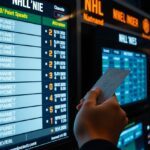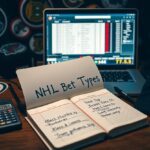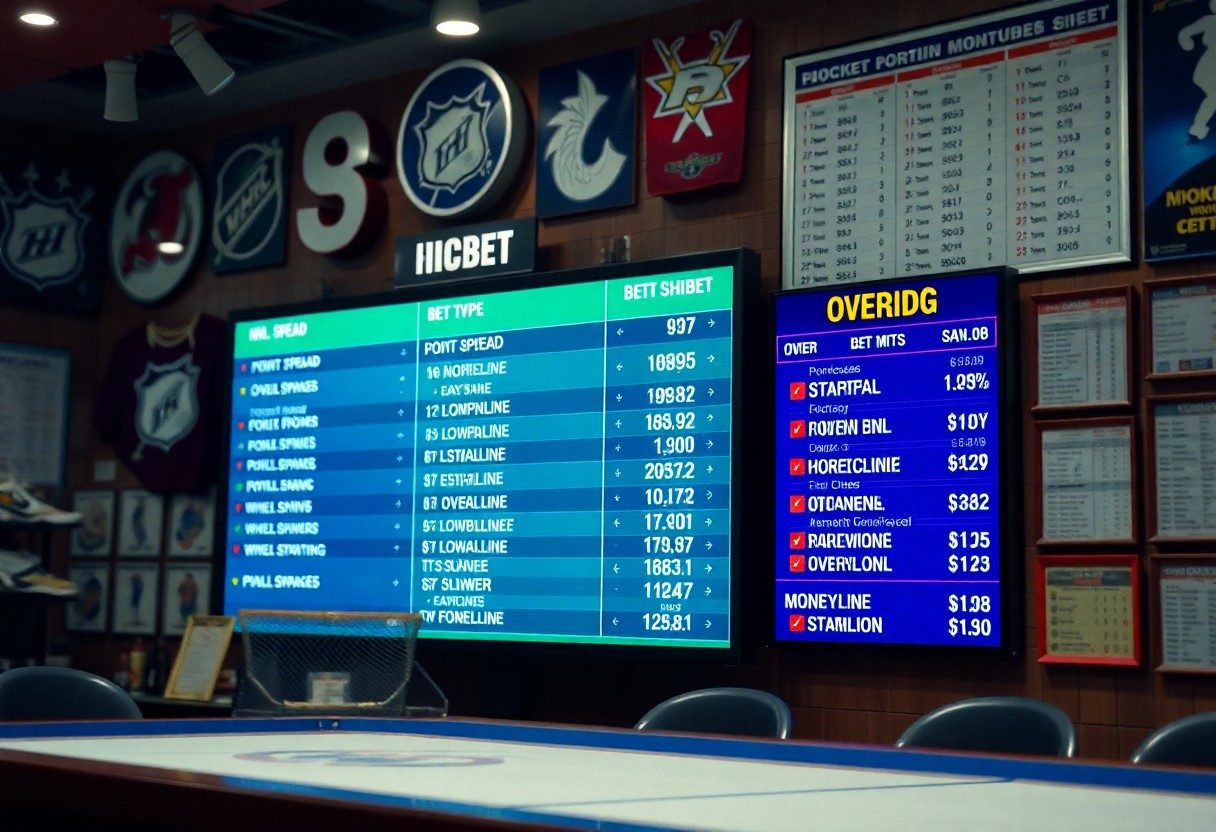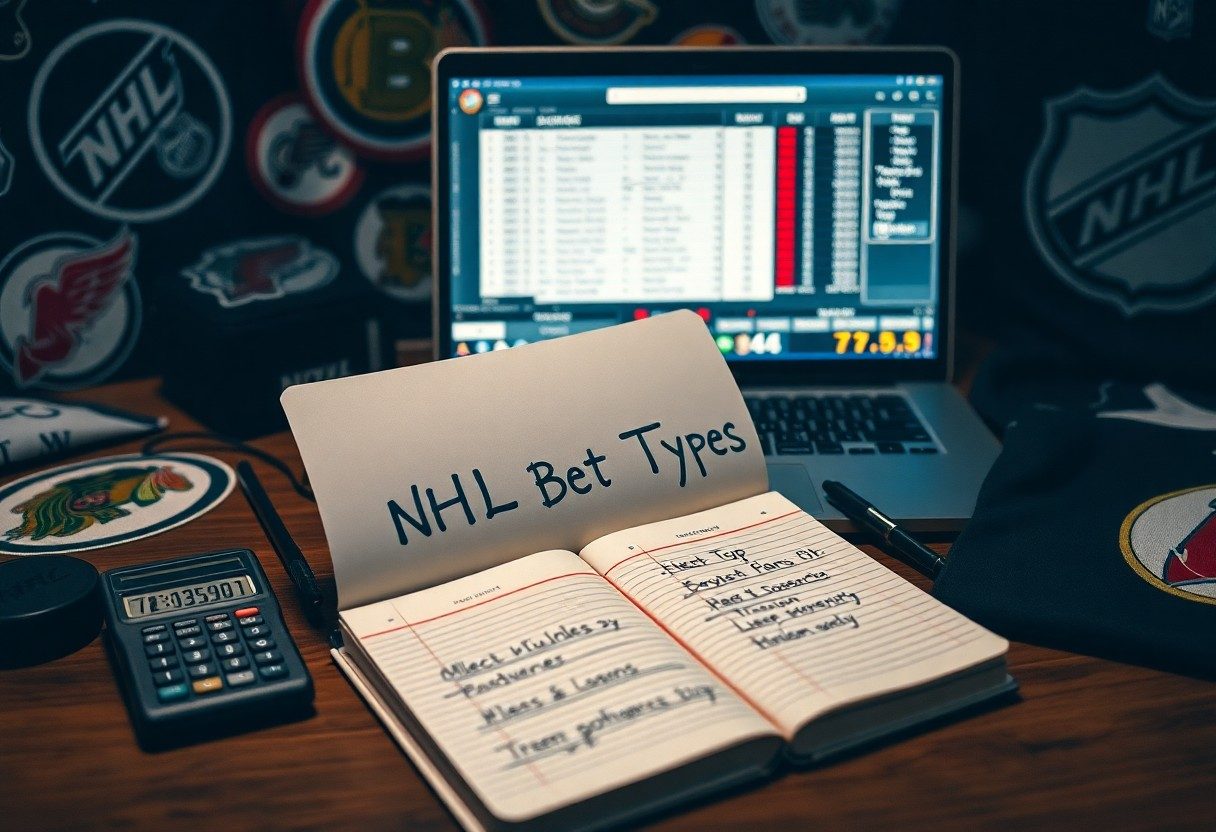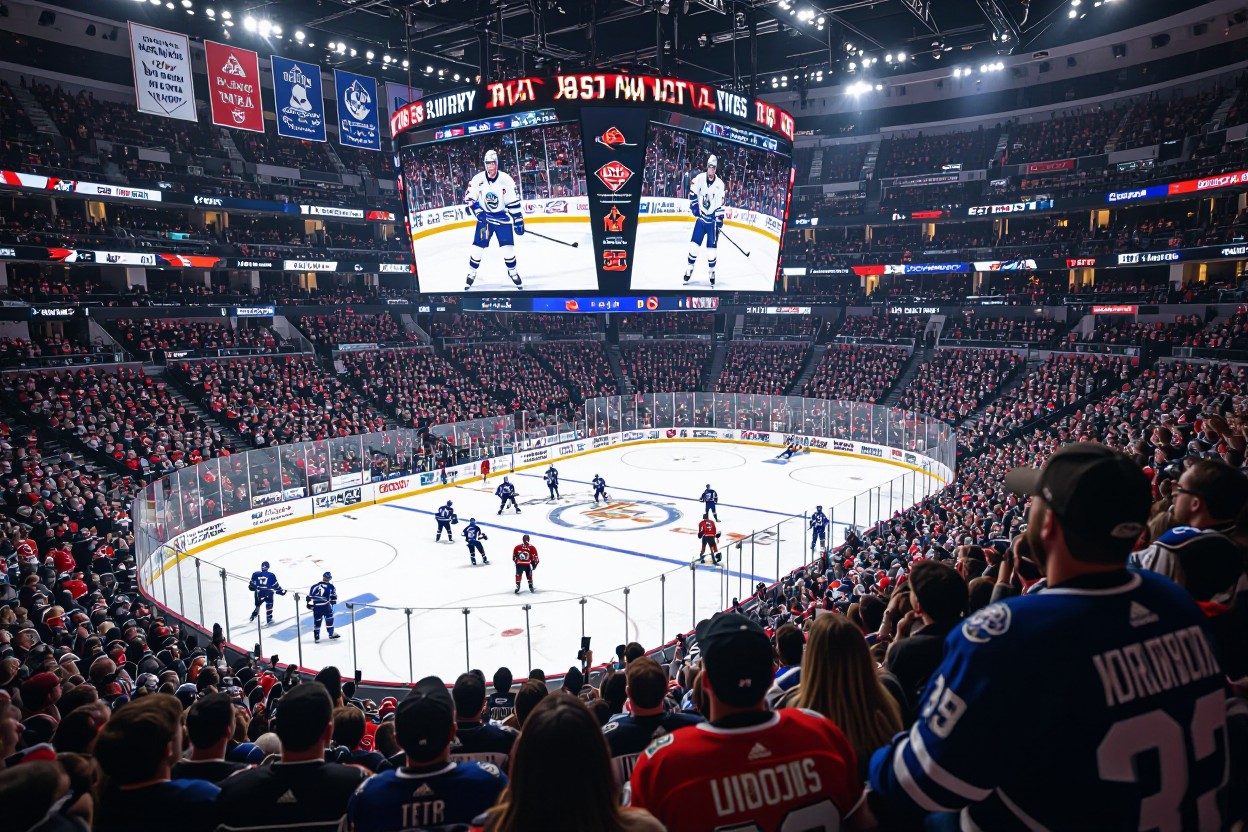There’s a world of excitement surrounding NHL betting that can enhance your viewing experience. In this guide, we’ll explore the most popular bet types including moneylines, puck lines, and totals, providing clear explanations to help you understand each wager’s mechanics. By grasping these fundamentals, you can make more informed decisions and maximize your potential winnings. Whether you’re a novice looking to dip your toes or a seasoned bettor seeking a refresher, this post is designed to enhance your betting knowledge in the NHL landscape.
Understanding NHL Bet Types
NHL betting can be simplified into several key types that appeal to diverse strategies and preferences. Understanding these can enhance both your knowledge and your chances of success. Here are the main bet types to consider:
- Moneyline Bets
- Puck Line Bets
- Over/Under Bets
- Futures Bets
- Prop Bets
Assume that mastering these bet types is vital for a rewarding NHL betting experience.
| Bet Type | Description |
|---|---|
| Moneyline | Bet on which team will win the game outright. |
| Puck Line | Bet on a team to win by a specific goal margin. |
| Over/Under | Bet on the total combined score of both teams. |
| Futures | Bet on outcomes that will be decided later in the season. |
| Prop Bets | Bet on specific events or player performances within a game. |
Moneyline Bets
In a moneyline bet, you’re simply choosing which team you believe will win. The odds will reflect the perceived strength of each team, indicated by positive and negative numbers. For example, a favorite might have odds of -150, meaning you need to bet $150 to win $100, while an underdog at +130 signifies a $100 bet would yield a $130 profit if they win. This straightforward betting style is ideal for beginners and seasoned bettors alike.
Puck Line Bets
Puck line bets introduce a twist to betting on NHL games by requiring a team to win by a specific margin, typically 1.5 goals. If you select a favorite, they must win by two or more goals for your wager to succeed. Conversely, betting on an underdog means they can either lose by one goal or win the game outright for your bet to pay off. This format makes the betting landscape more dynamic and allows for potentially greater payouts.
Understanding puck line bets is vital for those looking to maximize their betting strategy. It involves not only predicting the winner but also considering game dynamics and goal differentials. For instance, a strong offensive team playing against a struggling defense might have a lot of scoring, making a puck line bet on the favorite appealing. On the other hand, upsets are common in hockey, and savvy bettors often capitalize on those by selecting the underdog with a +1.5 goal edge, enhancing their chances. This bet type adds strategy to your betting and offers the chance for bigger returns compared to standard moneyline wagers.
Additional Bet Types
In addition to the standard NHL bets, there are various additional bet types that can add excitement and depth to your wagering experience. These include Over/Under bets, Prop bets, and more, each offering unique ways to engage with the game. Understanding these options enhances strategy and provides insight into team and player performance. Here’s a quick overview of the additional bet types:
| Bet Type | Description |
| Over/Under Bets | Wager on total points scored |
| Prop Bets | Bets on individual player or event outcomes |
| Puck Line Bets | Spread betting with a set point differential |
| Futures Bets | Long-term wagers on season outcomes |
| Live Betting | Bets placed during the game |
Over/Under Bets
Over/Under bets involve wagering on whether the total number of goals scored in a game will be over or under a specified number set by oddsmakers. For example, if the line is set at 5.5, betting on the “over” means predicting more than 5 goals will be scored, while the “under” suggests fewer. Finding value in these lines often requires analyzing both teams’ offensive and defensive statistics.
Prop Bets
Prop bets, short for proposition bets, offer unique opportunities to wager on specific events within a game that do not directly relate to the final score, such as which player will score first, or the total number of assists by a player during the game. These bets can provide an entertaining twist to the standard betting landscape, allowing fans to engage more deeply with their favorite players.
In NHL betting, prop bets can take many forms, from player statistics like goals or assists to specific game events, such as the first team to score or the number of penalties assessed. For instance, you might find odds on whether a specific player will score a hat trick, which showcases the nuances of individual performance. This type of betting not only heightens interest in the game but also allows savvy bettors to capitalize on player form and matchups. Recognizing opportunities in prop betting can lead to rewarding outcomes beyond traditional wagers.
Step-by-Step Betting Process
| Step | Description |
|---|---|
| 1. Research and Preparation | Analyze team performance, injuries, statistics, and trends to make informed decisions. |
| 2. Placing Your Bet | Select a sportsbook, choose your bet type, and enter the amount you want to wager. |
Research and Preparation
Effective betting starts with thorough research. Look into team statistics, recent performances, head-to-head matchups, and player injuries. Utilize resources like analytics websites and betting forums to gather insights. This background information can significantly influence your betting decisions, such as identifying value bets or spotting potential upsets.
Placing Your Bet
Once you’ve done your homework, it’s time to place your bet. Navigate to your chosen sportsbook, select the NHL game you’re interested in, and choose the type of bet you wish to make. Input the stake amount and confirm your wager. Keep an eye on odds fluctuations, as they can impact potential returns.
After deciding on your bet, ensure you double-check the details before confirming. Bettors can face significant losses from mistakes like selecting the wrong bet type or miscalculating odds. Many sportsbooks also provide live betting options, allowing you to place wagers as the game progresses, presenting opportunities to capitalize on shifting momentum or unexpected game developments.
Key Factors to Consider
When exploring into NHL betting, a comprehensive understanding of key factors can significantly influence your outcomes. Assess the following:
- Team Performance
- Player Statistics
- Injuries
- Matchups
- Historical Data
This will enhance your decision-making and betting strategy.
Team Performance
Evaluating a team’s current form is vital for successful NHL betting. Look at their recent wins and losses, home versus away performance, and how they fare against specific opponents. A team on a winning streak or consistently dominating at home may offer favorable betting opportunities. Staying updated on any trends can reshape your expectations.
Player Statistics
Player statistics are integral in analyzing potential outcomes. Focus on metrics like goals scored, assists, plus-minus rating, and time on ice. A player’s ability to contribute offensively can shift a game’s dynamics. Keep tabs on key performers—those consistently driving offensive play or making game-changing defensive moves—especially during playoffs when individual performances heighten in intensity.
For instance, tracking a player’s shooting percentage versus goalies they frequently face can reveal underlying patterns. Similarly, injuries to star players drastically alter team dynamics; assessing how a team performs without a leading scorer can highlight betting advantages. Recent performances, penalties, and historical success against certain teams also inform predictions, making player stats a vital tool in your betting arsenal.
Tips for Successful Betting
To enhance your NHL betting experience, adhere to these important tips:
- Understand the different bet types
- Analyze team statistics and player performances
- Monitor injury reports and lineup changes
- Set realistic goals and limits
- Explore multiple sportsbooks for favorable odds
This combination of strategies can significantly increase your winning potential.
Bankroll Management
Bankroll management is fundamental for long-term success. Establish a budget and stick to it, betting only a small percentage of your total bankroll on a single wager. A common rule is to limit bets to about 1-5% of your total funds. This approach ensures that you can withstand losing streaks without depleting your resources, allowing you time to recover and capitalize on future opportunities.
Staying Informed
Remaining well-informed is a significant advantage in NHL betting. Analyze trends, player form, and team dynamics to make educated choices. Following expert analysis, “analytics” metrics, and utilizing social media can help you stay ahead. Understanding the impact of coaching changes or how teams perform under different circumstances enhances decision-making. This constant flow of information becomes invaluable when considering bets.
Pros and Cons of Different Bet Types
| Pros | Cons |
|---|---|
| Varied options allow for tailored strategies. | Higher complexity can confuse beginners. |
| Potential for higher payouts on prop bets. | Limited information on certain player performance. |
| In-play betting offers real-time excitement. | Emotional decisions may cloud judgment. |
| Futures bets can yield great value. | Long wait times for payout realization. |
| Spread betting can level the field. | Increased risk for novice bettors. |
Advantages of Various Bets
Different bet types come with distinct advantages. For instance, moneyline bets are straightforward, making them ideal for newcomers, while point spread bets offer excitement through competitive matchups. Additionally, over/under bets provide a unique angle for predicting game dynamics. Prop bets often yield higher payouts, rewarding bettors who accurately predict specific outcomes. Collectively, these diverse options cater to various risk appetites and strategic preferences.
Disadvantages to Watch For
Each bet type carries potential downsides that bettors should consider. Complexity can escalate quickly, particularly with exotic bets, making it easy to misjudge a situation. In-play betting might lead to impulsive choices fueled by immediate results, harming overall strategy. Additionally, futures bets involve a long-term commitment without immediate feedback, challenging patience and risk management. Therefore, understanding these disadvantages is vital for sound betting.
The landscape of NHL betting is rife with complications. For instance, while the allure of high payouts in prop bets can tempt many bettors, the inherent uncertainties—such as injury impacts or unexpected player performances—can thwart expectations. Furthermore, the emotional highs and lows associated with real-time betting can skew logical decision-making. Understanding these factors can empower bettors to navigate the risks more effectively, ensuring a more calculated approach to wagering.
Final Words
So, understanding the common NHL bet types is imperative for making informed wagering decisions. By breaking down options such as moneylines, puck lines, totals, and prop bets, bettors can enhance their strategies and engage more fully with the sport. Armed with this foundational knowledge, enthusiasts can confidently navigate the betting landscape, increasing their chances of successful outcomes. Always approach betting with clear reasoning and a solid grasp of these fundamentals to optimize your experience.
FAQ
Q: What are the most common types of bets in NHL games?
A: The most common types of bets in NHL games include Moneyline bets, where you choose which team will win; Puck Line bets, which involves a point spread; and Over/Under bets, where you wager on the total number of goals scored in a game.
Q: How does the Puck Line betting work in NHL?
A: Puck Line betting involves betting on a team to win by a certain margin, typically 1.5 goals. If you bet on a team with a -1.5 Puck Line, they must win by at least two goals for the bet to be successful. Conversely, if you bet on a team with a +1.5 Puck Line, they can lose by one goal or win the game for the bet to pay off.
Q: What is the significance of Over/Under bets in NHL wagering?
A: Over/Under bets allow you to wager on whether the total goals scored by both teams will be over or under a predetermined number set by the sportsbook. This type of bet does not depend on which team wins, but rather on the overall scoring performance in the game.




